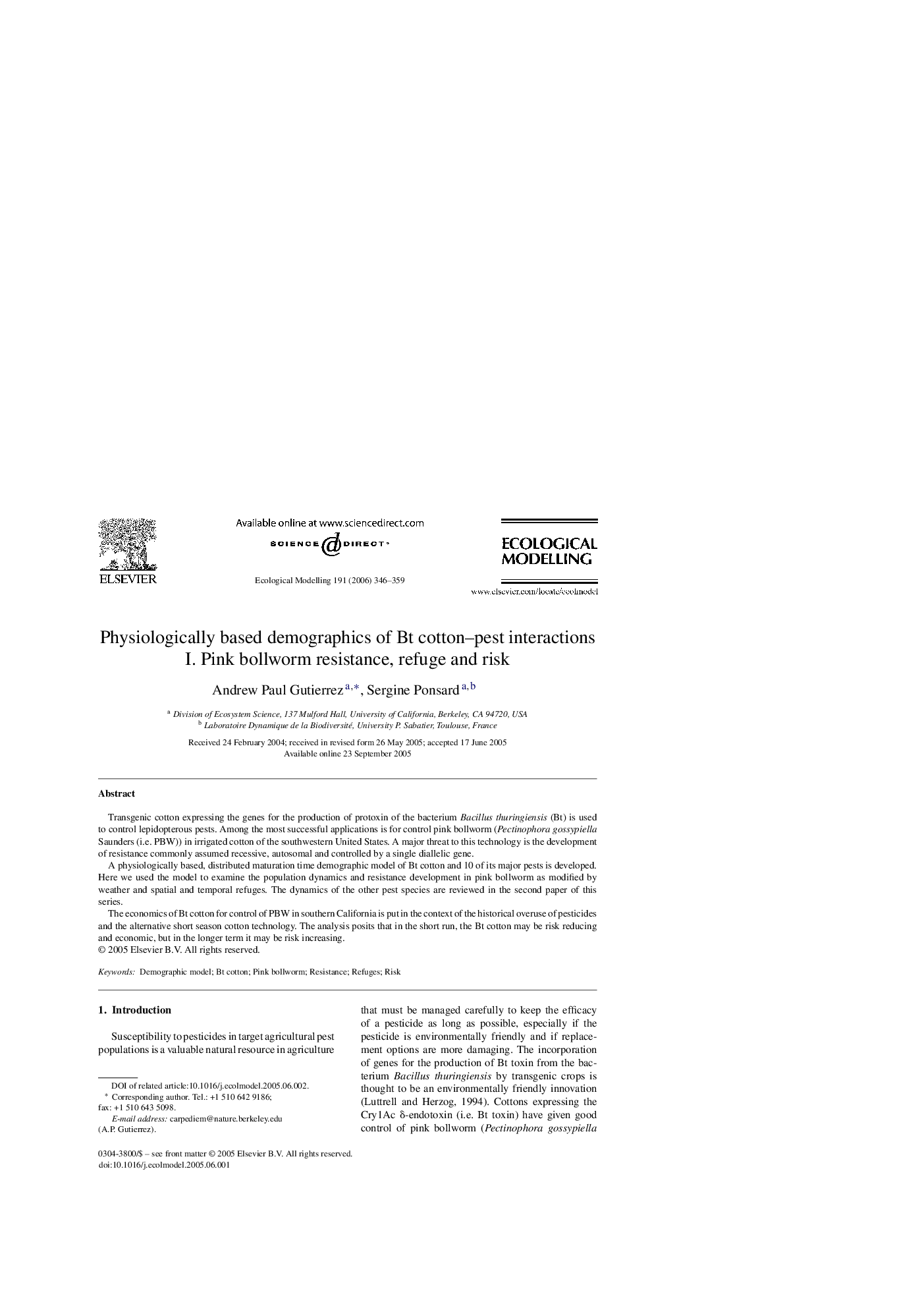| Article ID | Journal | Published Year | Pages | File Type |
|---|---|---|---|---|
| 4379353 | Ecological Modelling | 2006 | 14 Pages |
Transgenic cotton expressing the genes for the production of protoxin of the bacterium Bacillus thuringiensis (Bt) is used to control lepidopterous pests. Among the most successful applications is for control pink bollworm (Pectinophora gossypiella Saunders (i.e. PBW)) in irrigated cotton of the southwestern United States. A major threat to this technology is the development of resistance commonly assumed recessive, autosomal and controlled by a single diallelic gene.A physiologically based, distributed maturation time demographic model of Bt cotton and 10 of its major pests is developed. Here we used the model to examine the population dynamics and resistance development in pink bollworm as modified by weather and spatial and temporal refuges. The dynamics of the other pest species are reviewed in the second paper of this series.The economics of Bt cotton for control of PBW in southern California is put in the context of the historical overuse of pesticides and the alternative short season cotton technology. The analysis posits that in the short run, the Bt cotton may be risk reducing and economic, but in the longer term it may be risk increasing.
